These days, CJ Chen (陳崇仁) can be found driving a taxi in and around Hualien. As a way to earn a living, it’s not his first choice. He’d rather be taking tourists to the region’s attractions, but after a 7.4-magnitude earthquake struck the region on April 3, demand for driver-guides collapsed.
In the eight months since the quake, the number of overseas tourists visiting Hualien has declined by “at least 90 percent, because most of them come for Taroko Gorge, not for the east coast or the East Longitudinal Valley,” he says.
Chen estimates the drop in domestic sightseers after the quake — which killed 18 people, caused US$2.53 billion in damage and devastated the internationally famous gorge — as not less than 50 percent.

Photo: Steven Crook
‘VERY MISERABLE’
Another driver, who also works through the Ownrides booking platform describes the state of local tourism as “very miserable.”
According to the Tourism Administration’s Tourism Statistics Database, even those attractions in the east that recent natural disasters left untouched have seen visitor numbers plummet since April 3.
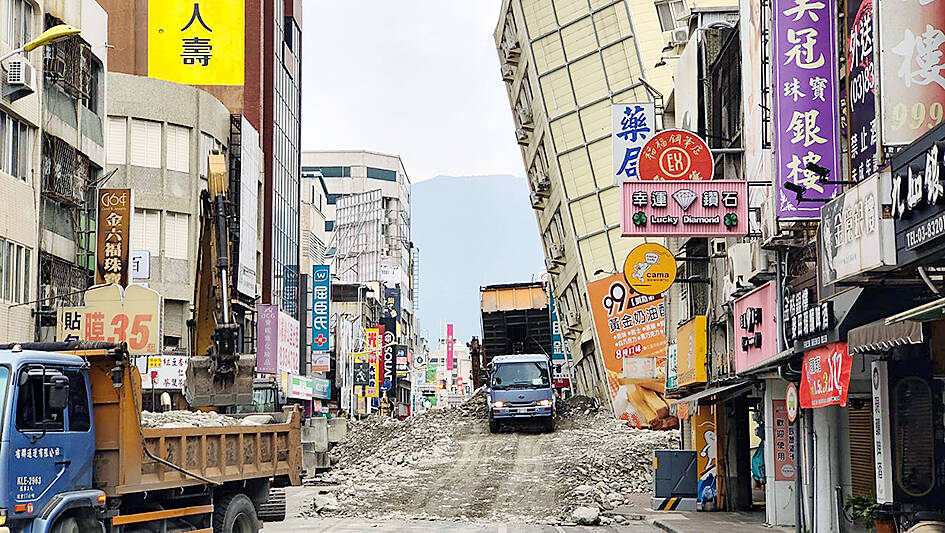
Photo: Wang Chin-yi, Taipei Times
In the six months starting April 1 last year, Liushishi Mountain (六 十石山, also known as Sixty Stone Mountain), a spot in Hualien County’s Fuli Township (富里) popular on account of the orange daylilies that carpet the hillside each summer, drew 169,763 tourists. During the same period this year, the total was 63,112.
On Aug. 20, the Liberty Times (the sister newspaper of the Taipei Times) reported that average daily attendance at this year’s Taiwan International Balloon Festival was 28 percent lower than last year.
The event is held in Taitung County’s Luye Township (鹿野), more than 100km from the earthquake’s epicenter. Even though it suffered no significant harm, the area is still being impacted by the damage done to transportation infrastructure connecting Taiwan’s east with the country’s densely populated north. These road and rail difficulties were exacerbated by typhoons Gaemi (which made landfall in Yilan County on July 24) and Kong-rey (which hit Taitung on Oct. 31).
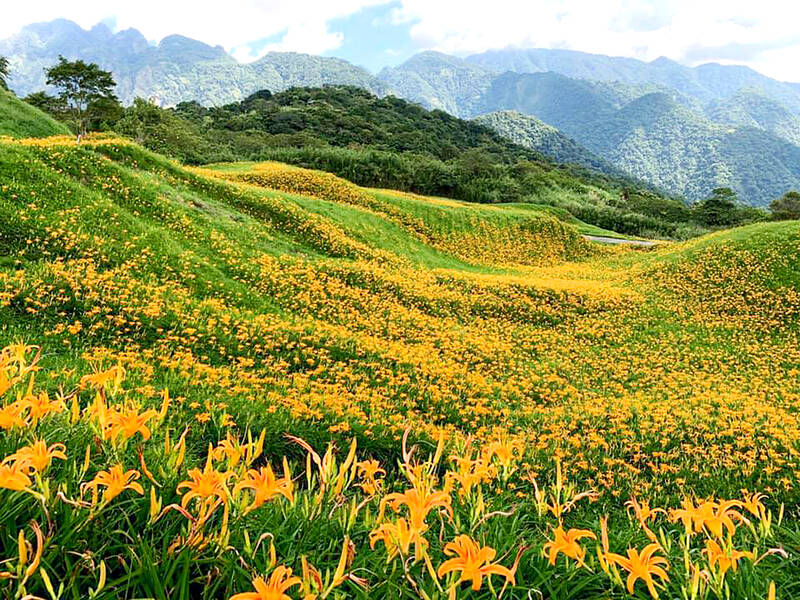
Photo courtesy of reader
Politicians and the public have focused on the plight of Hualien’s hotels, at least 21 of which have ceased operations since April 3. While agreeing that Hualien’s tourism industry deserves all the help it’s been getting, Kari Batik — who with his wife runs a four-guestroom B&B in Luye — says that, after the quake, “it was immediately clear that we were more or less in the same boat, because of road access and because many outsiders see Huatung [花東, the neighboring counties of Hualien and Taitung] as a single area.”
An 11km-long section of the Suhua Highway, the principal road between Hualien and Suao (蘇澳) in Yilan County, is closed for the greater part of each weekday so reconstruction can proceed. Taroko National Park’s Web site warns that slopes along the highway “remain unstable” — hardly encouraging words for self-driving tourists.
WAITING FOR BETTER TIMES
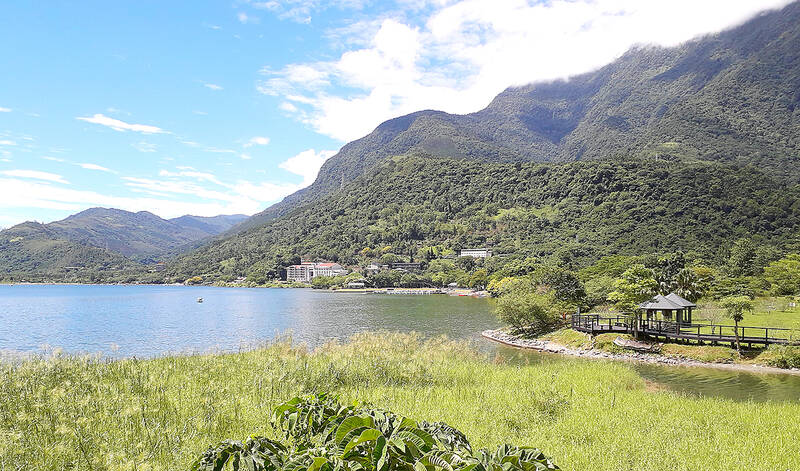
Photo: Steven Crook
Batik says that, while Six Lands B&B (六分舍民宿) is getting some bookings from Kaohsiung and Tainan, “few people dare to drive via Suao, and not many at all are coming from the north.”
Guest numbers for this year’s April-November period were down by more than 60 percent compared to last year.
“That’s a huge difference for us, because after mortgage repayments and other costs, we don’t have much left for necessary renovations and personal expenses,” says Batik, a Swiss-Canadian.
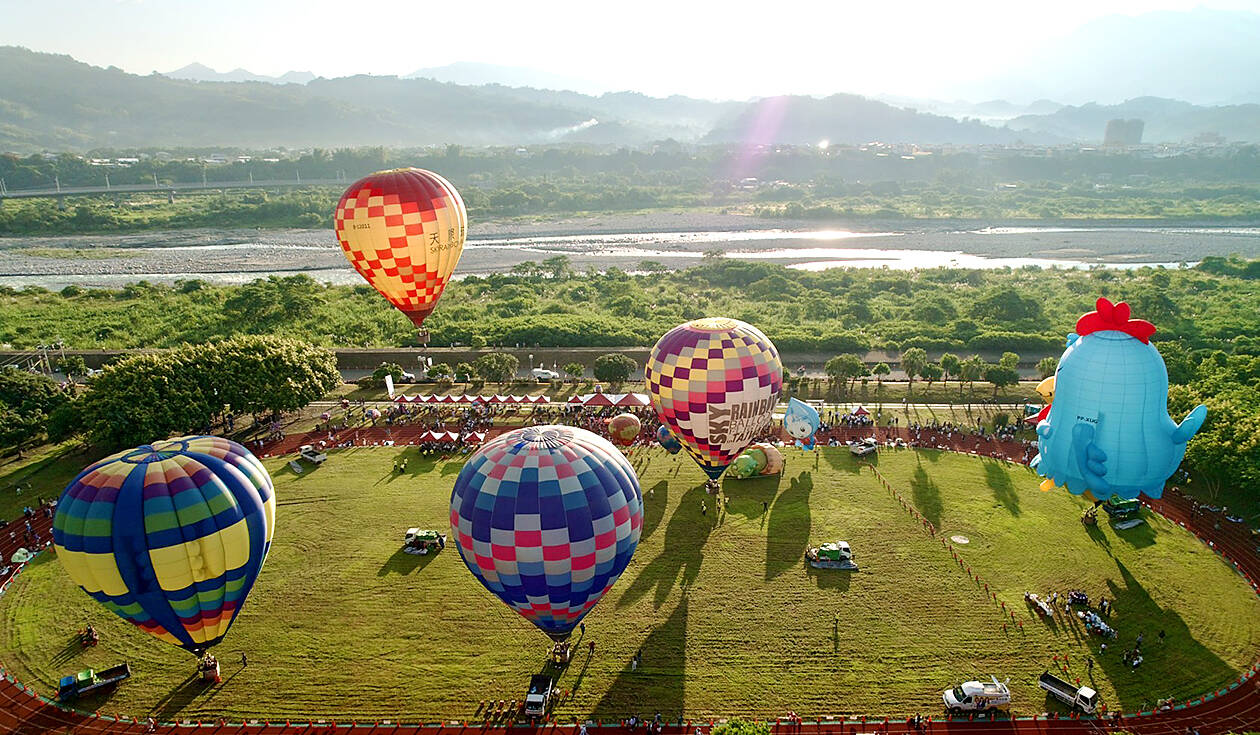
Photo courtesy of the Taitung County Government
“Right now we should be fixing our roof, which leaks, but it’ll have to wait for better times,” he adds.
From time to time, Batik and his wife jointly guide groups of French-speaking visitors, but he says they’re unwilling to take on more tours, because it means being away for up to two weeks, and it’s hard to predict when the B&B will be busy.
Other accommodation providers in Luye are bemoaning the lack of customers, as are local bike-rental businesses, he says. Some restaurants have closed down, and farmers who sell tea directly to tourists aren’t doing well.
“I’ve even heard that the boss of the gas station was complaining,” Batik says.
TEMPORARY RELIEF
Batik says accommodation subsidies funded by the central government provided a bit of temporary relief, but the program should have been launched earlier and it should have included Taitung from the get-go. Hualien-bound tourists were eligible for up to NT$1,000 per person starting June 1; the subsidies couldn’t be applied to bookings in Taitung until Aug. 1.
The two drivers introduced to the Taipei Times by Ownrides say they’ve not received any government help since April 3.
Silks Place Taroko, a luxury hotel located near the inland end of Taroko Gorge, was evacuated following the earthquake. The 160-room property welcomed its first post-quake guests exactly six months later, but it was soon forced to again suspend operations after Typhoon Kong-rey disrupted water and electricity supplies. This second hiatus is due to end on Jan. 16.
In an e-mailed response, Susan Jung (榮婕妤), the hotel’s PR supervisor, declined to discuss the financial impact of the closures on Silks Hotel Group, or say if government subsidies or insurance payouts had softened the blow.
Most of Taroko Gorge’s famous scenic spots are expected to be off limits for several years, but Jung says the hotel will continue to provide “exceptional experiences that go beyond our stunning gorge setting.” These include “tranquil forest yoga sessions, integrating local farm produce into our culinary offerings [and] cultural activities in partnership with the nearby Xiangde Temple (祥德寺).”
Batik hopes the government will prioritize all necessary repairs to Taroko Gorge and the Suhua Highway. If these can be completed, “it’d be a huge boost for tourism and an immediate and massive benefit for the local economy,” he says.
OPTIMISM?
Writing in a recent issue of the Dong Hwa Journal of Humanities and Social Science Online, Yang Fu-min (楊富民) expresses a modicum of optimism. While admitting that “an atmosphere of despair has spread,” the Hualien-based community organizer points out that, before April 3, many foreign visitors experienced Taroko Gorge as a day trip from Taipei, and that this form of tourism didn’t bring much wealth to Hualien.
Yang argues that the emphasis on tourism has distorted priorities, “making us no longer focus on what we need, but rather turning this place into what others want it to be.”
Stores that meet residents’ daily needs, such as breakfast vendors and bike-repair shops, have been replaced by businesses which cater to tourists.
This year’s natural disasters will force tourism stakeholders to confront the industry’s long-standing problems, Yang predicts. These issues include pricing, quality, transportation, whether value flows into the area, as well as the objects and subjects of local development.
“These problems weren’t exposed by the earthquake, but the quake has made it impossible for us to ignore them any longer,” he writes.
The April 3 calamity has already broken the deadlock, Yang contends. Tour companies which previously relied on Taroko have, since the gorge’s closure, “turned to local communities to provide high-quality experiences. The dialogue mechanism between the two sides has been rebuilt."
Steven Crook has been writing about travel, culture and business in Taiwan since 1996. He is the author of Taiwan: The Bradt Travel Guide and co-author of A Culinary History of Taipei: Beyond Pork and Ponlai.”

Next week, candidates will officially register to run for chair of the Chinese Nationalist Party (KMT). By the end of Friday, we will know who has registered for the Oct. 18 election. The number of declared candidates has been fluctuating daily. Some candidates registering may be disqualified, so the final list may be in flux for weeks. The list of likely candidates ranges from deep blue to deeper blue to deepest blue, bordering on red (pro-Chinese Communist Party, CCP). Unless current Chairman Eric Chu (朱立倫) can be convinced to run for re-election, the party looks likely to shift towards more hardline

Last week the story of the giant illegal crater dug in Kaohsiung’s Meinong District (美濃) emerged into the public consciousness. The site was used for sand and gravel extraction, and then filled with construction waste. Locals referred to it sardonically as the “Meinong Grand Canyon,” according to media reports, because it was 2 hectares in length and 10 meters deep. The land involved included both state-owned and local farm land. Local media said that the site had generated NT$300 million in profits, against fines of a few million and the loss of some excavators. OFFICIAL CORRUPTION? The site had been seized

Sept. 15 to Sept. 21 A Bhutanese princess caught at Taoyuan Airport with 22 rhino horns — worth about NT$31 million today — might have been just another curious front-page story. But the Sept. 17, 1993 incident came at a sensitive moment. Taiwan, dubbed “Die-wan” by the British conservationist group Environmental Investigation Agency (EIA), was under international fire for being a major hub for rhino horn. Just 10 days earlier, US secretary of the interior Bruce Babbitt had recommended sanctions against Taiwan for its “failure to end its participation in rhinoceros horn trade.” Even though Taiwan had restricted imports since 1985 and enacted
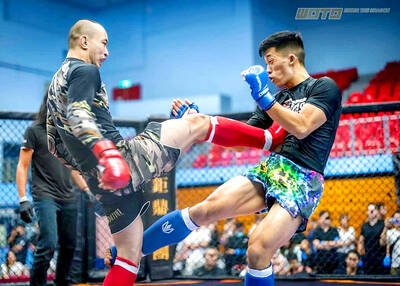
Enter the Dragon 13 will bring Taiwan’s first taste of Dirty Boxing Sunday at Taipei Gymnasium, one highlight of a mixed-rules card blending new formats with traditional MMA. The undercard starts at 10:30am, with the main card beginning at 4pm. Tickets are NT$1,200. Dirty Boxing is a US-born ruleset popularized by fighters Mike Perry and Jon Jones as an alternative to boxing. The format has gained traction overseas, with its inaugural championship streamed free to millions on YouTube, Facebook and Instagram. Taiwan’s version allows punches and elbows with clinch striking, but bans kicks, knees and takedowns. The rules are stricter than the